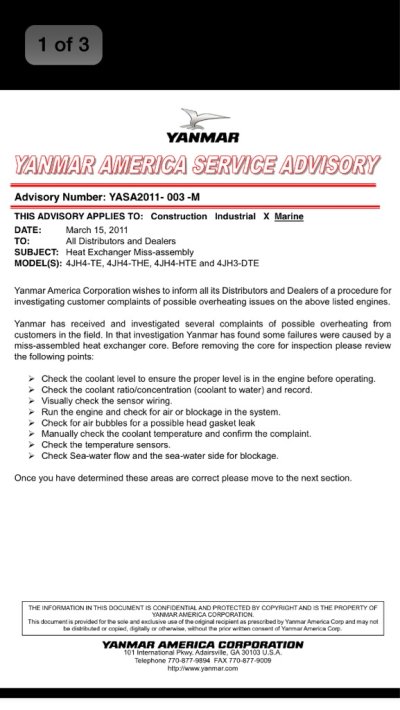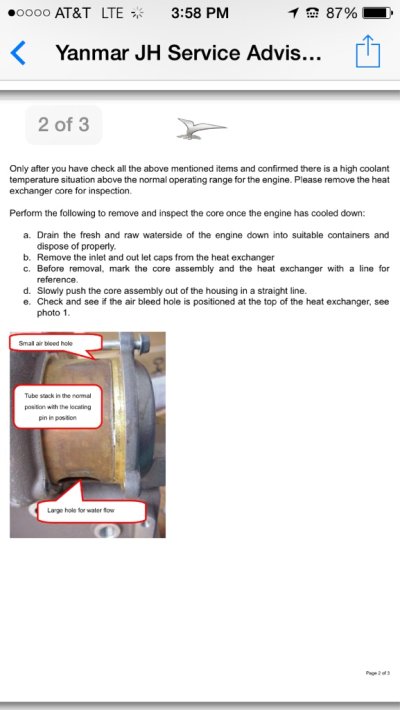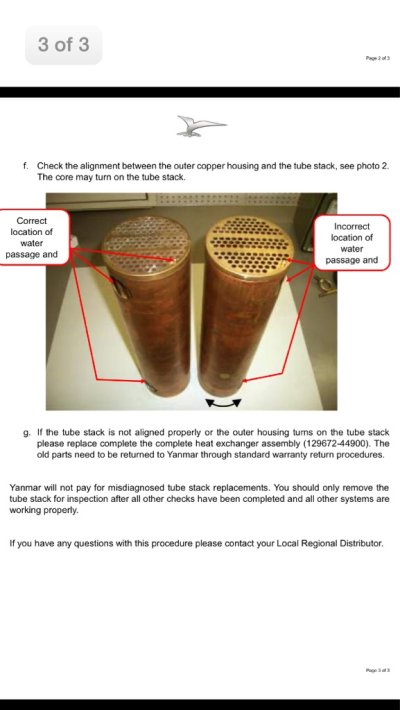cardude01
Guru
- Joined
- Nov 26, 2012
- Messages
- 5,290
- Location
- USA
- Vessel Name
- Bijou
- Vessel Make
- 2008 Island Packet PY/SP
My Yanmar 4jh4-hte (turbo, intercooled) operator's manual says to run the engine up to max RPM periodically. I invariably forgot to do this while underway-- maybe did it twice in 4 days on our last trip. When I run it that fast the vibration and noise is pretty bad, plus I still have a pesky overheating issue when I give it full throttle (temp rises above 180 fairly quickly).
At up to 2600 rpm the temp stays at 180 or below. I usually cruise between 2000-2400rpm (30-40hp out of 110 max hp) for speeds of about 6.5-7.5 knots.
Am I doing damage by not doing this full throttle drill? I think I read I was also supposed to do it before turning the engine off, but I'm usually so preoccupied with not hitting the dock I forget to do then also.
At up to 2600 rpm the temp stays at 180 or below. I usually cruise between 2000-2400rpm (30-40hp out of 110 max hp) for speeds of about 6.5-7.5 knots.
Am I doing damage by not doing this full throttle drill? I think I read I was also supposed to do it before turning the engine off, but I'm usually so preoccupied with not hitting the dock I forget to do then also.



